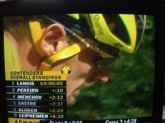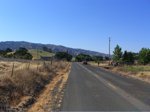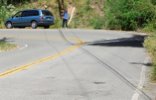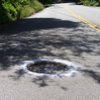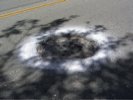Floyd Landis has, for the moment, a Tour de France title and two blood samples that tested positive for testosterone samples. He won’t get to keep the title if the test results stand, though; cycling officials are ready to strip him of the championship, and the Tour runner-up Oscar Pereiro is saying he wants a yellow-jersey presentation so that he feels like he’s really the Tour winner. So Landis is doing the only thing he can until his lawyers figure out who to sue: launching a media blitz to tell his story, which boils down to “I’m an honest, hard-working guy and I’m telling you I didn’t do anything wrong.” The truth is that there’s really nothing he can say that will get him off the hook. The best case, for everyone, would be the appearance of some incontrovertible evidence that he shot himself up with something, that someone tampered with his samples, or that the test was simply wrong and invalid. Landis could confess. Some lab technician could come forward and say, “I did it.” Or cycling officials could say the test is untrustworthy. Don’t hold your breath.
Instead, speculate about what might explain the positive test result that came back after Landis’s heroic win on Stage 17:
—Landis needed a pick-me-up after getting thrashed in Stage 16 and knowingly took something he shouldn’t have. As I’ve said before, I doubt this because the consequences of being found out were so predictably devastating.
—Landis was doping all along and just happened to get caught after Stage 17. Landis and his supporters make much of the fact he was tested eight times during the Tour and that just one of the results came back positive (in fact, the head of the International Cycling Union says only one of 300 tests administered during the Tour — Landis’s, after Stage 17 — came back positive). But what if he was taking something all through the Tour that went undetected, for whatever reason, until his incredible physical effort in the 17th stage? I suppose you could call this the BALCO scenario, after the Bay Area sports-nutrition lab that distributed performance-enhancing substances that anti-doping tests couldn’t detect. ESPN cycling correspondent Andrew Hood notes that Landis was seldom tested in past years, and also discusses known ways of defeating the current testing protocols.
—Landis doped unknowingly. Maybe a well-meaning trainer gave him a little something extra in his daily dose of vitamins and supplements (not a credible possibility; the probability of detection, and the consequences from it, are just too high); or some enemy managed to slip him something (I shy away from most gunman-on-the-grassy-knoll theories, so I can’t swallow this one).
—Alcohol or cortisone or something else threw off the test results. A real possibility, according to some serious sports-nutrition types, though probably very hard to prove.
—Landis’s samples were deliberately contaminated. By whom? Why? It’s the gunman on the grassy knoll again. Tough sale.
—Landis’ normal testosterone levels are naturally high, leading to a false positive result. If this is true, it ought to be a matter of producing the medical records that demonstrate it.
Take your pick, or come up with your own explanation. I’m still sticking with my instinct that a guy who’s been around the highest level of cycling for so long, who had apparently gotten to the elite level without doping, wouldn’t have done something as suicidal from a career perspective as drug himself with the whole world watching.
Technorati Tags: cycling, floyd landis, landis, tour de france



